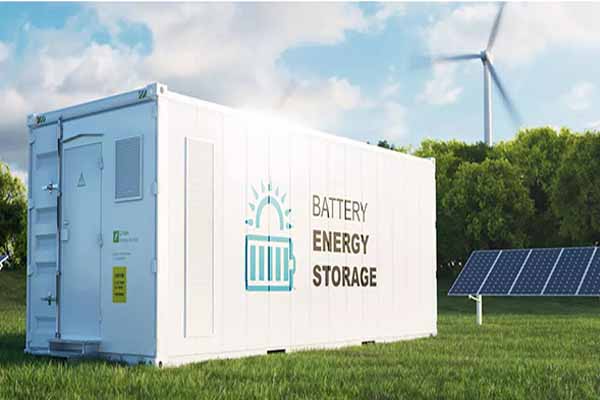Battery Energy Storage System (BESS) is an emerging technology that has the potential to revolutionize the energy sector. It is an energy storage system that uses batteries to store energy from renewable sources such as solar, wind, and hydroelectricity. The energy stored in the batteries can then be used at a later time to provide electricity when needed. BESS is becoming increasingly popular as it offers a cost-effective and efficient way to store and use renewable energy as it is quickly becoming the go-to solution for many energy-related needs. As the technology continues to evolve, its applications will expand, creating jobs and economic opportunities for those involved in its development and deployment.
In the past decade, the rapid growth of (BES) systems has occurred due to a variety of factors, including technological advancements, government incentives, and the falling cost of batteries. This article will discuss the causes and implications of the rapid growth of (BES) systems.
BESSs are typically composed of multiple battery cells, which are connected in a series or parallel configuration. Battery cells are typically composed of a cathode, an anode, and an electrolyte. The cathode and anode are electrodes that store and release electrical energy, while the electrolyte facilitates the energy transfer between the two electrodes. When the battery cells are connected in a series configuration, they are connected to a common positive and negative terminal. This allows the energy stored in each battery cell to be used in a variety of applications. One of the major drivers of the rapid growth of (BES) systems is the development of new technologies. The most common type of BESS is the lithium-ion battery, which is composed of several lithium-ion cells connected in series. Lithium-ion batteries are known for their high energy density and long cycle life, making them a popular choice for many energy storage applications. Advances in lithium-ion batteries, such as those used in electric vehicles, have made them more efficient and cost-effective, allowing them to be used in a wide range of applications. Other types of BESSs include lead-acid batteries, nickel-cadmium batteries, and flow batteries, additionally, new chemistries such as flow batteries and sodium-ion batteries, have opened up new possibilities for large-scale energy storage. These technological advancements have enabled the growth of (BES) systems to be much faster than it was even a decade ago.
It can be used for a variety of applications including peak shaving, frequency regulation, and backup power. Peak shaving is used to reduce peak electricity demand by storing energy during periods of low demand and releasing it during periods of peak demand. Frequency regulation is used to balance the frequency of the electricity grid by releasing energy when it is needed. Backup power is used to provide power during power outages or when the electricity grid is unstable. The growth of BESSs is being driven by a number of factors. One of the key drivers is the declining outlay of batteries and the subsequent increase in their efficiency. This has allowed for the emergence of various new business models, such as the virtual power plant concept, where multiple BESSs are connected together to create an energy storage system capable of meeting both short-term and long-term energy needs. Additionally, the development of smart inverters, which allow BESSs to be integrated into the grid and give operators access to real-time data, has further enabled the growth of this technology.
Another factor driving the rapid growth of Battery Energy Storag systems is the availability of government incentives. Many countries, states, and municipalities have implemented incentives and policies designed to spur the development and deployment of (BES) systems. These incentives range from tax credits to direct subsidies, and they have enabled the industry to reach a scale that would not have been possible without them. BESSs are becoming an increasingly important part of the energy mix. They provide the necessary flexibility to help balance the variable inputs of renewable energy sources, while also providing the necessary energy storage to help meet peak demand.
BESS has numerous advantages over traditional energy storage methods such as hydroelectric dams and pumped storage. It can store energy on-site, reducing the need for expensive transmission lines. It can also be quickly deployed and adjusted to meet the needs of the energy grid, providing a flexible, reliable source of power. BESS also has the potential to provide backup power during outages and help reduce electricity costs and for that, they are also becoming increasingly popular in the residential sector. Homeowners are using BESSs to store energy generated from solar panels or wind turbines for later use. This helps them to reduce their electricity bills while also reducing their environmental impact. The technology is still in its early stages, but it is already being used in many countries around the world. In the United Kingdom, a BESS system is being used to store energy from a wind farm in Scotland. The system is capable of storing up to 200 megawatt-hours of energy, which is enough to power over 20,000 homes for a day. In the United States, BESS is being used in Hawaii to store energy from solar panels and help the state transition to a renewable energy future.
Lastly, the cost of batteries has been falling rapidly in recent years. This has been driven largely by the increased production of lithium-ion batteries due to the popularity of electric vehicles. As the cost of batteries has decreased, the cost of energy storage systems has fallen as well, making them more accessible to a wider range of customers. The rapid growth of (BES) systems has a number of implications for the energy industry. For one, it provides utilities with a more reliable and cost-effective way to store energy and balance electricity grids. Additionally, it enables renewable energy sources such as wind and solar to be more easily integrated into existing power grids. Finally, it provides consumers with a reliable and cost-effective way to store their own energy, allowing them to reduce their electricity bills and become more energy independent.
The technology is rapidly evolving and is expected to become more efficient and cost-effective in the coming years. As battery technology advances, the costs of BESS are expected to decrease, making it even more attractive to energy providers. Additionally, increased research and development in the field is expected to improve the safety and reliability of BESS systems. BESS is an exciting new technology that has the potential to revolutionize the energy sector. It can provide a cost-effective, reliable, and safe way to store energy from renewable sources. As the technology continues to evolve, BESS is expected to become an increasingly important part of the energy sector in the years to come.
Overall the rapid growth of Battery Energy Storage Systems has been an undeniable success. The rapid growth of BESSs is an incredibly encouraging development in renewable energy technology. This technology has the potential to revolutionize the way electricity is produced and stored, providing a cost effective, clean, and efficient way of storing electricity. As the cost of batteries continues to decrease and the technology continues to mature, BESSs are likely to become an even more integral part of the energy mix in the future.















